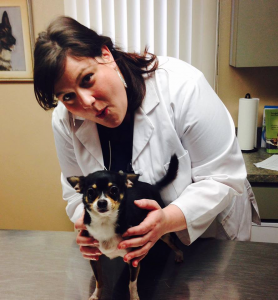Well folks, we have reached the point where New Year’s resolutions are in full effect, and everyone wants to change something about their life/schedule/wellness/career for the better. For me that something is veterinary medicine.
Vet med is like the college roommate that borrowed your zoology textbook and then left it on a bench somewhere on campus. Vet med is the relative that you told to “make themselves at home” and then they order 10 premium on-demand movies. Vet med is the neighbor who wakes you up at 6 am on a Saturday with a leaf blower.
But when you look at things on a deeper level you see that it’s the same college roommate that makes sure you get all your messages and that same neighbor who reliably watches your cats while you are out of town.
See, what I’ve realized over my 17-year career is that vet med is transparent about what it is; exhausting, rewarding, sometimes depressing, sometimes joyful, never boring. It took me a long time to realize that the things I hated about vet med (the no lunch breaks, the hours spent in surgery past my shift, the economic struggle) were not completely vet med’s fault. Often, it was my own inability to create healthy boundaries around work and what I thought it meant to be a dedicated technician. You see at one time I stayed late every day; I ate lunch while sitting next to a bulldog in recovery and answered client questions at 10 pm while trying to soothe a small child back to sleep. And I am ashamed to say, I judged other techs harshly if they weren’t as “dedicated” as I was. I now see that I was upholding toxic systems that have led to much of the frustrations in veterinary medicine.
So, in learning that boundaries are in fact important, and by properly setting them – I am starting to love met med again. And while boundaries are different for everyone, here’s what they can look like:
- Saying no to working every weekend. Unless this is something you agreed to in your contract.
- Committing to your family time after work hours by not continuing to check emails or answering calls. Believe me, this was a hard one until my son pointed out how I never see his shots at basketball practice because I am always on my phone.
- Giving yourself permission to say no to job opportunities that, while enticing perhaps monetarily, don’t suit your lifestyle needs. I learned this one the hard way…
- Utilizing your paid time off when you’re sick. Need a mental health day? Want to take a vacation or just because you have earned it and want to take it? Do it!
So maybe a New Year, New You is just a matter of setting healthy boundaries with vet med. Remember that not everyone is going to totally understand your boundaries (or necessarily agree with them), and that’s okay; you have them in place for a reason, and you need to respect that for yourself.
